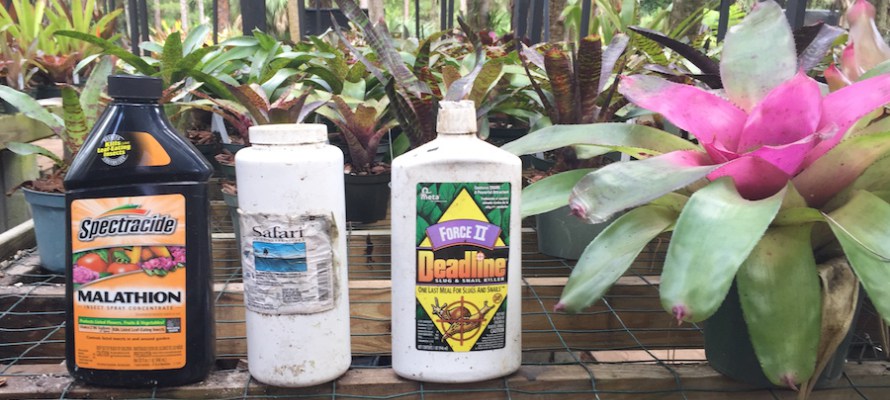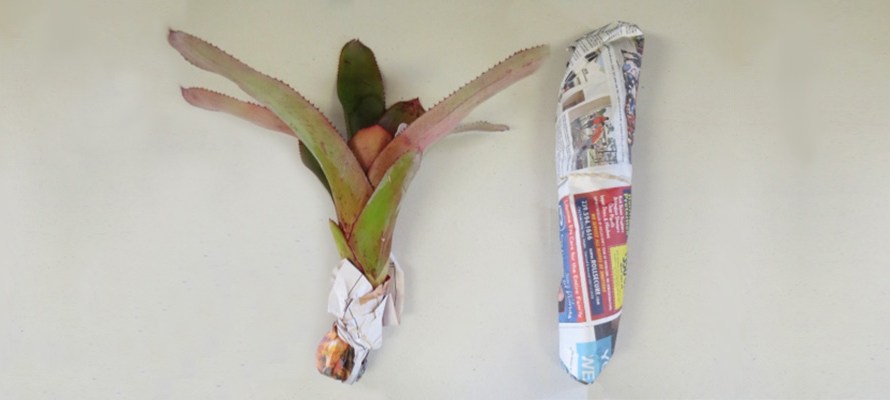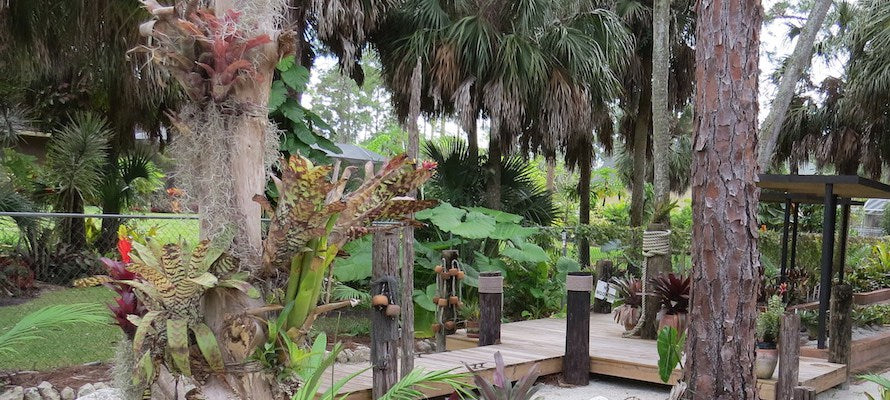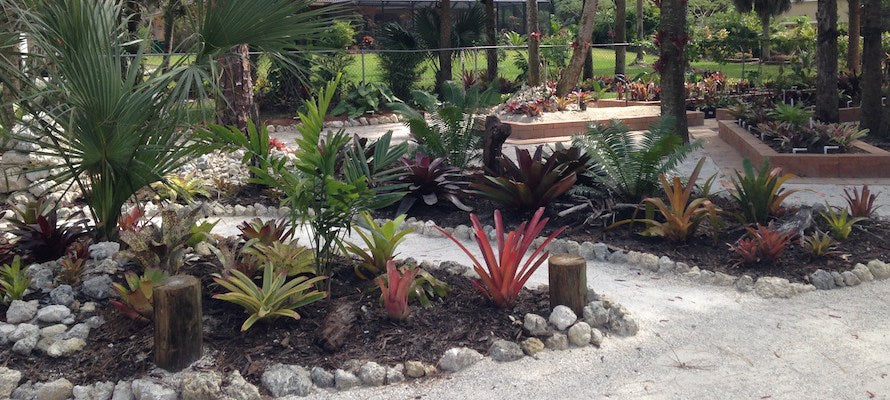Your Cart is Empty
Get Free Shipping on all orders $120 or more.

The two biggest threats to your bromeliads living outdoors are pests and rot. We lose more plants to root and stem rot than we do from pests, but pests can destroy leaves and slow growth if not not controlled.
Pest problems are not as common for bromeliads as some other cultivated hobbyist plants but that doesn’t mean you shouldn’t be watchful. Careful, regular inspection will turn up any problems before they can get out of control.
Most often hand removal and quarantining infested plants should prevent any major damage.
Healthy plants will better withstand minor attacks from common pests, but if outbreaks are common in your area, it is a good idea to have a regular program of spraying with either a contact insecticide such as Malathion or a systemic such as Safari.
Bromeliads can be sensitive to any chemical so always test a small portion first. I typically start off with half the recommended amount as directed to avoid burning the leaves.
For snails and slugs, regular use of a bait works best. I prefer a product called Deadline.
Other common pests to watch out for are:
At Bromeliad Paradise, we dip all of our newly potted and purchased plants in a solution of Malathion to ensure the plants and potting mix are bug free.
When there is a lack of air movement around the plant stem or roots, they are susceptible to attack by fungus or bacteria, which begins to cause rot.
The best cure is to remove the plant from its potting medium, clean it thoroughly with a anti-bacterial soap such as Physan-20, and cut away all old roots and any rotting stem.
Once the stem is dry and free from any rotted tissue, plant the bromeliad in a pot one size smaller than the pot previously occupied using a very porous mixture (I recommend at least 60% small pine bark nuggets).
Water with a solution of 1 tablespoon of hydrogen peroxide to 1 gallon of water. This will provide more oxygen to the roots and help kill any lingering bacteria in the roots or the potting mix.
You should use this solution until the plant is growing new luxurious leaves. Once it is thriving it can be up-potted to the original size pot and watered normally.
We can’t stress enough that how important a healthy root system is to a bromeliads health. A bromeliad with a well-established root system is able to use those roots to replace moisture that is lost through its leaves due to transpiration. A well aerated potting mix is the key.
Too much sun and your bromeliad will get ugly dead spots on the leaves from sun burn. Too little light and it will go green and ‘leggy’ or eventually die altogether. 50% shade is the general rule of thumb but you can adjust this based on your observations or your grower’s recommendations.
Good air circulation not only reduces chances of bacterial or fungal infections, but reduces the chance your plants will be attacked by pests. This doesn’t mean that they need a lot of wind, just that they should not be obstructed from air flow or be planted in soil that cannot “breath”.
Finally, do not overwater! A light spray can be beneficial to increase humidity and keep the leaves hydrated, but bromeliads do much better when the roots get plenty of aeration. This can only happen if the soil is not oversaturated with water. Remember, to have a healthy root system means to have a healthy bromeliad.
Using these tips and having a little patience will greatly improve your chances of enjoying Bromeliads that are healthy, colorful and productive.

When a bromeliad is ordered on-line, it will either be taken as an offset from a mother plant, or it will be taken from a pot. Either way, it is possible that it has already started to grow roots.

Bromeliads are a type of plant called epiphytes, which means that they draw moisture from the air and don’t need to be in soil to survive. While their roots can draw water and nutrients, they typically serve as a plant’s ‘anchor’, attaching and holding it place.

Although mosquitoes are not a pest that can harm your bromeliads, they can become very annoying to everyone around them. Mosquitoes are currently a topic of conversation as common sense and the facts often give way to rumor and sensationalism.